5 Reasons to visit the Mara Naboisho Conservancy
Bordering the famous Masai Mara National Reserve in Kenya, the Mara Naboisho Conservancy is a success story of conservation and community development. In the language of the Maasai, “Naboisho” means “coming together”, which is exactly what the 500 landowners of the conservancy achieved when the conservancy was originally created. Since its creation, the conservancy has gone from strength to strength, benefitting the people, the wildlife, and the natural resources of the environment. With so many high-quality safari destinations available within the borders of Kenya, here are five reasons why the Naboisho Conservancy should be included in your safari plans.
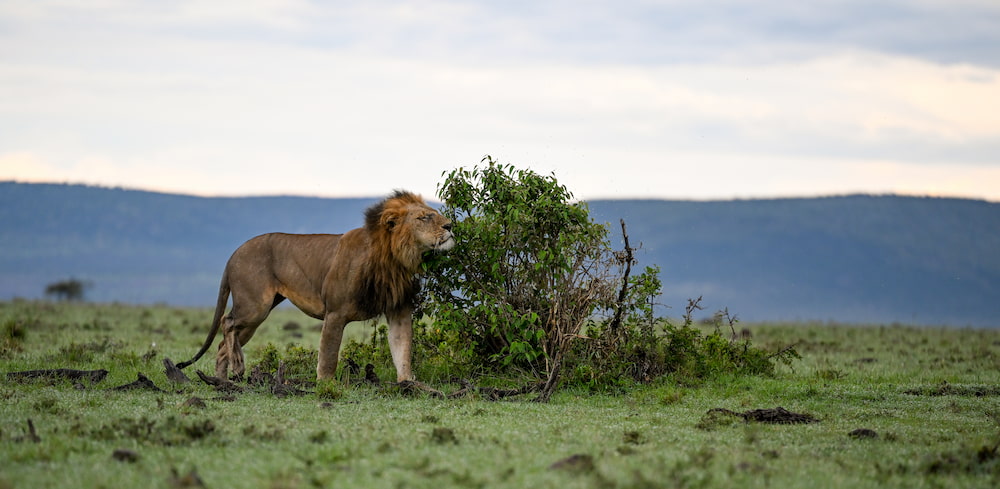
A male lion checks a bush for scent in the Mara Naboisho Conservancy.
1. The Space
When the Mara Naboisho Conservancy was originally founded, the landscape was in dire need of resuscitation. Overgrazing and misuse had eroded the soil quality, placing further strain on the ecosystem and contributing to the financial problems the traditional pastoralist communities were facing. In order for the new conservancy to be a success, it was acknowledged that careful land management would be crucial in allowing the ecosystem to not only recover, but to thrive on a sustainable basis. In line with this, the carrying capacity of the conservancy was determined to ensure that the number of visitors never exceeds the available natural resources. Each camp within the conservancy is therefore limited to a specific size, both in terms of the number of beds in the camp as well as the number of vehicles the camp is allowed to operate. These two key guidelines ensure that the conservancy always offers its guests a sense of exclusivity whilst placing the sustainability of the ecosystem at the top of the agenda. Guests staying in camps outside of the conservancy are not permitted to enter, and only vehicles registered to the conservancy may drive inside it. The result is an elevated guest experience, a healthy ecosystem, and a thriving wildlife population.
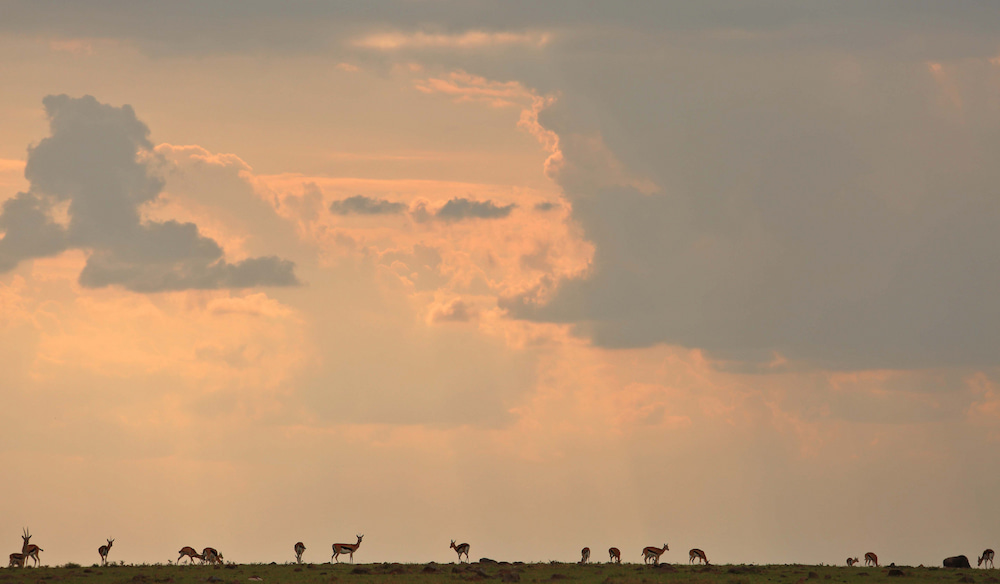
Sunset over the healthy and thriving conservancy.
2. The Wildlife
Under the land management plan, cattle were moved into demarcated grazing areas, used on a rotational basis to allow for regeneration, and informal communities were relocated into more formal villages where the development of communal resources could be better implemented. In the absence of both people and cattle, the grasslands began to recover, and the wildlife began to arrive. Today, the conservancy is home to one of the highest densities of lion in Africa, large herds of elephant, resident leopard and a variety of plains game. The border to the Masai Mara is unfenced, allowing animals to move freely between the reserve and the conservancy. From July to October, the wildebeest of The Great Migration swarm across the plains of the Masai Mara, spilling over into the Naboisho Conservancy to enjoy the fertile grasslands. The rich landscape, in conjunction with the lower number of tourists and vehicles, quickly made the conservancy a preferred environment, allowing for a game viewing experience that now rivals the Masai Mara. In addition to the abundance of wildlife, the experience is further enhanced by the strict code of conduct governing the safari guides. There is a minimum distance that must be adhered to when approaching wildlife, and a maximum of only six vehicles are allowed at a sighting at any given time. These rules prevent wildlife from feeling harassed or threatened, and ultimately improve the guest experience.
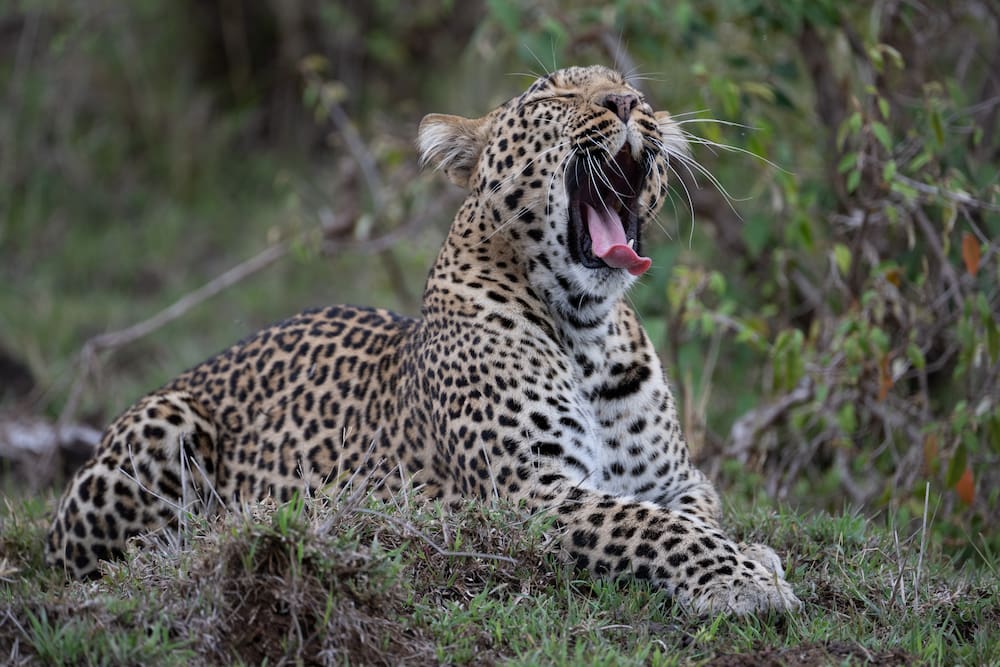
The Mara Naboisho Conservancy is home to an impressive number of resident leopard.
3. The Activities
As the Mara Naboisho Conservancy is independent of the Masai Mara Reserve, the rules of the reserve do not apply to the conservancy. This allows for a far wider scope of activities beyond the twice daily game drives typically enjoyed in the reserve. In addition to game drives, the conservancy allows walking safaris, night game drives and the adventurous option of fly camping. Walking and fly camping are only available from Naboisho Camp, while night game drives are available from both Naboisho and Encounter Mara. Heading out after dark with a red filtered spotlight allows for an entirely different vehicle-based experience, watching for the tell-tale reflection of eyes from within the darkness. To sit in the complete darkness with both the lights and the engine off, listening to lions calling through the darkness of the night is always a memorable experience. A walking safari is usually best enjoyed in the early morning as soon as it’s light enough to safely venture out on foot. Away from the rumble of the vehicle, the snap of every twig underfoot becomes audible as your senses dial in to the reality that you are now walking through lion territory. The focus of a walking safari shifts towards the smaller ecosystems, spoors and tracks often overlooked from the height of a vehicle, but bigger game is always seen and observed from a safe distance. For the adventurous traveller, a night spent in a fly camp is often the highlight of their stay. In the afternoon, set out on foot from Naboisho Camp for a walking safari that culminates with your arrival into your private fly camp. Simple dome tents with comfortable bedding, dinner and breakfast prepared on the fire, evening drinks under the stars, and hot morning coffee accompanying sunrise over the Naboisho Conservancy.

Fly camping provides the adventurous traveller with a unique experience.
4. The Community
Dotted around the outskirts of the conservancy are the villages and bomas of the Maasai families that own the land of the Naboisho Conservancy. While many aspects of their lifestyle are unchanged from their heritage and traditions, the income and development generated through the creation of the conservancy has resulted in a variety of positive changes to their everyday quality of life. Many of the staff in both Naboisho Camp and Encounter Mara are from these communities, so for them to be able to accompany guests into their villages and introduce their family members brings an additional layer of authenticity into the experience. Visiting a traditional boma and experiencing the conditions of the lifestyle offers a genuine and eye-opening immersion into the daily life of these Maasai. Alongside the traditional elements, there is also the opportunity to see how the communities have benefitted through the creation of the conservancy, in the form of boreholes for easier access to water, the protection of natural resources and the opportunity to create additional revenue streams. Importantly, heritage and culture have been retained whilst quality of life has been improved. The people understand the benefits of tourism and the importance of protecting their land and the wildlife in order for the tourism model to be sustainable. The result is an authentic cultural experience free from the expectations of a handout all too frequently encountered when visiting local villages.
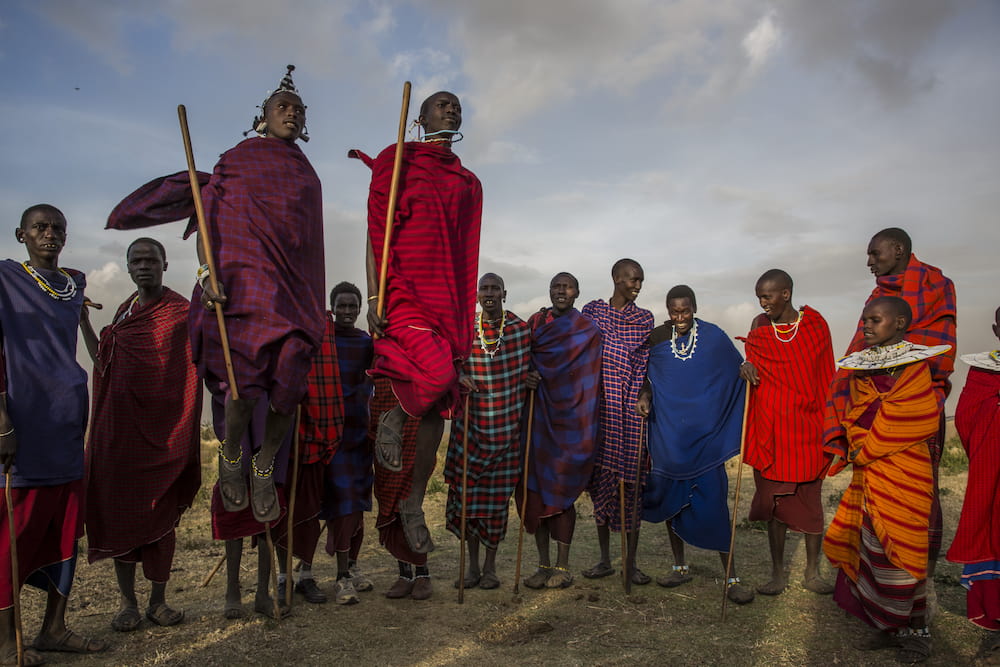
There are opportunities for meaningful and authentic cultural interaction with the Maasai of the Mara Naboisho Conservancy.
5. The Contribution
The land of the conservancy is leased to tourism partners, like Asilia, who pay an annual fee for the use of the land, irrespective of whether there are guests in camp. This ensures that the landowners are receiving fair rental income for the use of their land. However, tourism brings with it a wealth of additional opportunities for income creation. All safari camps require staff, and most of these staff are hired from the surrounding communities, creating an income that stretches far beyond the primary bread winner. The creation of products which can be sold to camps either to be resold to guests or for use in camp is another wealth generation opportunity which has yielded positive results. Maasai beadwork is famous for its detail and vibrant use of colour, adorning belts, an assortment of jewellery, bags, and more. Ladies in the surrounding communities create beautiful pieces which are bought by camps both for staff use as well as for resale through camp shops. Every guest that stays in the conservancy pays a conservancy fee, which creates a fund for financing additional initiatives for the upliftment of the surrounding communities, improving the roads and infrastructure of the conservancy and employing rangers. By choosing to travel to the Naboisho Conservancy, you are choosing to give purpose to your travel, as the impact of your decision extends far beyond the personal enjoyment gained from the experience, benefitting the people and wildlife of Naboisho.
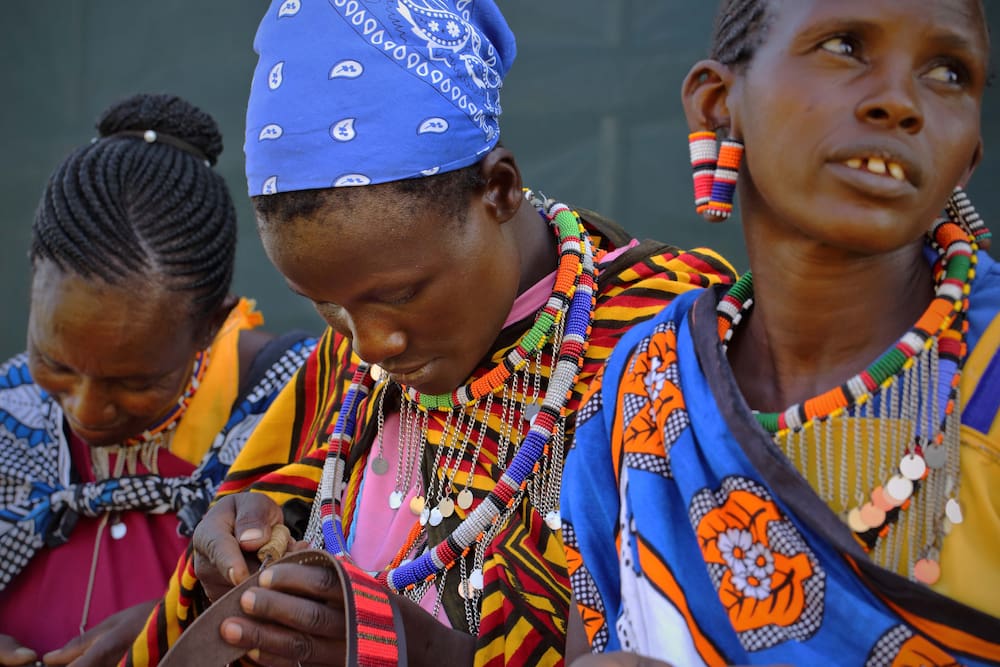
Maasai ladies create a variety of intricately beaded items.
If you are looking for a safari experience that offers excellent game viewing without needing to jostle against other vehicles competing for the best view, and that makes a meaningful difference to both people and wildlife, then the Mara Naboisho Conservancy should be right at the top of your safari destination wish list.
More Destinations Articles

What’s the difference? National Parks, Game Reserves, and Conservancies in East Africa
02 February 2020To most of us, a national park, game reserve, or conservancy are all the same...

7 Of Our Favourite Things About Lake Manyara National Park
04 December 2019Lake Manyara National Park is located in Tanzania's Arusha and Manyara region...

Naboisho: Home To The Mara’s Newest Pool
28 November 2019Naboisho is now home to the Mara Naboisho Conservancy’s newest pool. During t...

Guest Gallery: The Serengeti At Its Best
27 November 2019We recently had the pleasure of welcoming guests, Chris and Monique Fallows t...





